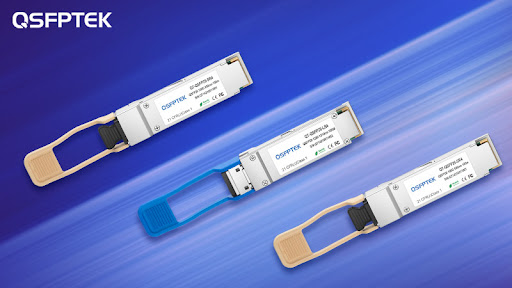With the increasing demand for bandwidth, 100G networks have developed rapidly. In order to meet the 100G long-distance transmission requirements, a variety of solutions have been produced: 4x25G NRZ series, 100G PAM4 series and coherent series.
4*25G NRZ technology is currently the most mainstream 100G optical module solution, consisting of four groups of transmitters and receivers. Under the requirement of long-distance transmission, in order to save optical fiber resources, wavelength division multiplexing technology is usually used to wavelength-division multiplex four optical signals into one optical fiber for transmission. There are many kinds of 4x25G NRZ optical modules, and the long-distance ones are LR4 (10km)/ER4 (40km)/ZR4 (80km). Coherent technology is the technical commanding height of the ultra-long-distance high-speed optical communication field, and is temporarily irreplaceable in the ultra-long-distance transmission field exceeding 90km. How are such abundant 100G long-distance optical modules used?
Among them, in the field of data centers, due to the high-density and low-power connection requirements of data centers, QSFP28 optical modules with smaller packaging and power consumption are mostly used, and then selected according to the needs of transmission distance.
100G long-distance transmission optical modules can be applied to metro DCI, for two or more data centers, to achieve mutual communication, share data and content, and provide redundant backup.
4x25G NRZ vs 100G PAM4 vs 100G coherent: How to Choose
4x25G adopts the NRZ solution, the technology is more mature, the cost of a single device is lower, and it can be directly interconnected with 25G optical modules. The 100G single-wave optical module uses 100G PAM4 modulation, which reduces optical complexity and cost compared to the 4x25G scheme by reducing the number of optical transmitters and receivers from 4 to 1. At the same time, the emergence of single-wave 100G transmission technology has laid the foundation for the development of 400G (4x100G) Ethernet. When selecting, if it is a 25G/100G data center, choose the 4x25G solution; if it is a 100G/400G data center, choose the 100G PAM4 solution.
100G optical modules meet the dual-rate requirements of Ethernet and optical transport networks and meet the requirements of more stringent telecom application environments. When 100G is adapted to OTU, it can be mapped to OTU4 (optical density unit), or it can be inversely multiplexed into OTU2/3. According to the specific implementation form of the 100G interface, there are multiple pairs of encapsulation mapping paths.
- 100G serial signal mapped to ODU4 (112Gbps rate)
- Inverse multiplexing of 100G serial signals to ODU2e, ODU2, ODU3
- 100G signal inverse multiplexing to 10*10G or 4×25G
100G coherent optical modules are mainly used for line-side optical transmission in 100G wavelength division systems. Compared with other various forms of line-side optical modules, they have good OSNR performance, sensitivity, dispersion tolerance, and DGD tolerance. DWDM wavelength division multiplexing technology using coherent modules is widely used in 100G metropolitan area networks to meet high-capacity and long-distance requirements.









